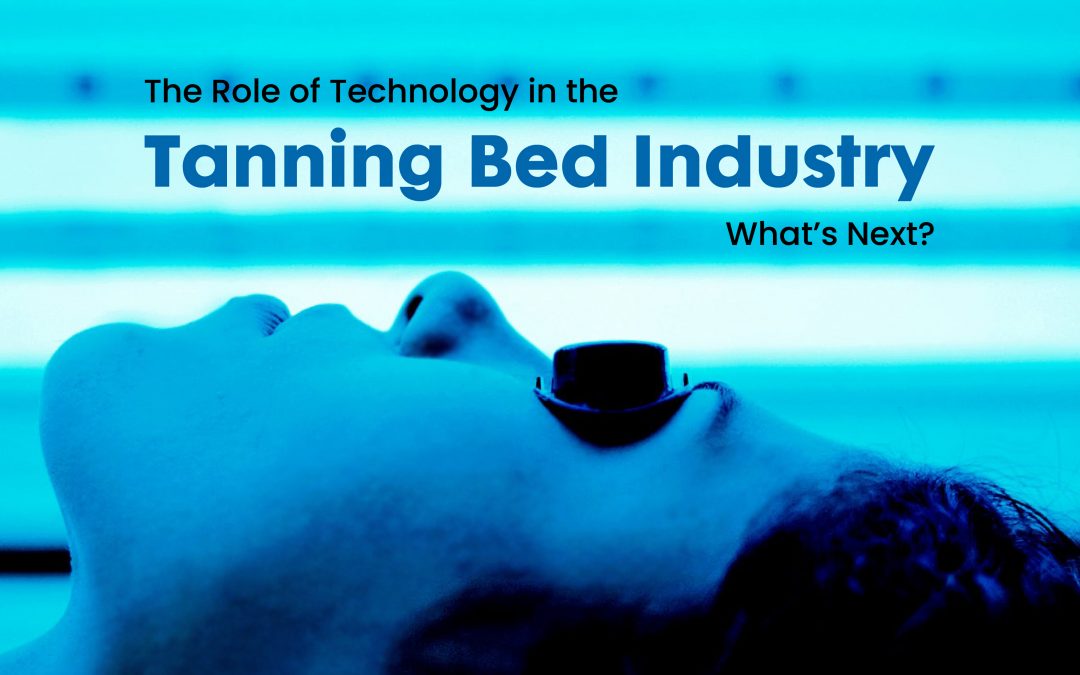The tanning bed industry has undergone significant transformations over the past few decades, evolving from simple UV lamps to sophisticated machines that promise a safer and more controlled tanning experience. As technology continues to advance, the tanning bed industry is poised for further innovation. In this blog, we will explore the current role of technology in the tanning bed industry, discuss what the future might hold, and provide insights into where tanning beds are used the most and for what purposes.
Current Technological Advancements in Tanning Beds
- Smart Tanning Technology
- Personalized Settings: Modern tanning beds now feature smart technology that allows users to set personalized tanning parameters. These settings can adjust the intensity, duration, and spectrum of UV light based on skin type and desired results. Some advanced models even include built-in sensors to monitor UV exposure and adjust settings in real-time to prevent overexposure.
- App Integration: Many new tanning beds are equipped with app integration, enabling users to control their sessions via smartphone. This connectivity allows for easy scheduling, monitoring of tanning progress, and even automatic adjustment of settings based on user preferences.
- Improved UV Technology
- LED and Hybrid UV Systems: Traditional UV lamps are being replaced by LED and hybrid UV systems. These technologies offer more precise control over UV wavelengths, reducing the risk of skin damage and ensuring a more even tan. LED systems also have a longer lifespan, making them a more cost-effective option for tanning salons.
- Red Light Therapy: Some modern tanning beds incorporate red light therapy, which is believed to enhance collagen production and improve skin texture. This dual-functionality allows users to benefit from both tanning and skincare treatments in a single session.
- Enhanced Safety Features
- UV Sensors: Safety is a major concern in the tanning bed industry, and technology is playing a crucial role in addressing this. UV sensors in new tanning beds can measure the intensity of UV radiation and provide real-time feedback to users. This helps in preventing overexposure and reduces the risk of skin damage.
- Automatic Shutdown: Many advanced tanning beds are now equipped with automatic shutdown features that kick in when the maximum safe exposure time is reached. This technology helps to prevent accidental overuse and ensures a safer tanning experience.
What’s Next for Technology in the Tanning Bed Industry?
- Artificial Intelligence (AI) Integration
- Predictive Analytics: AI could revolutionize the tanning bed industry by predicting individual tanning needs based on skin type, previous tanning sessions, and environmental factors. AI-driven systems could provide personalized recommendations for optimal tanning schedules and product use.
- Enhanced Personalization: AI can also enhance personalization by analyzing user data to tailor tanning sessions more precisely. This could lead to the development of custom tanning formulas and session settings, improving both the effectiveness and safety of tanning.
- Advanced Skin Diagnostics
- Skin Scanners: Future tanning beds might include advanced skin scanners capable of analyzing skin health and UV sensitivity. These scanners could provide detailed feedback and recommendations, ensuring that users receive a tanning experience that is tailored to their specific skin needs.
- Real-Time Monitoring: Integrating real-time skin monitoring could allow tanning beds to adjust UV exposure dynamically based on the user’s skin condition and response. This would enhance safety and effectiveness while minimizing the risk of overexposure.
- Sustainable Technologies
- Eco-Friendly Materials: As sustainability becomes increasingly important, the tanning bed industry may shift towards using eco-friendly materials and energy-efficient technologies. Solar-powered or low-energy tanning beds could reduce the environmental impact of tanning practices.
- Recycling and Reuse: Advances in recycling technology could enable better disposal and reuse of tanning bed components, contributing to a more sustainable industry.
- Virtual Reality (VR) and Augmented Reality (AR)
- Immersive Tanning Experiences: VR and AR could offer immersive experiences that enhance the tanning process. For instance,
- VR could simulate a beach environment while users tan, making the experience more enjoyable and relaxing.
- Interactive Features: AR could be used to provide interactive features, such as virtual consultations with skincare experts or real-time feedback on tanning progress through smart glasses.
Usage and Purpose of Tanning Beds: Locations and Statistics
- Popular Locations
- United States: The US has the highest concentration of tanning salons, with over 20,000 establishments nationwide. According to the American Academy of Dermatology, around 30 million Americans use tanning beds annually. The popularity of tanning beds in the US is driven by the desire for a bronzed appearance and the influence of beauty standards.
- Europe: In Europe, tanning beds are prevalent in countries like Germany, the UK, and France. The European tanning industry is substantial, with a significant number of users seeking tanning services for both aesthetic and cosmetic purposes. In Germany alone, there are approximately 7,000 tanning salons.
- Australia: Tanning beds are also widely used in Australia, where the desire for a tan is prevalent due to the country’s sunny climate. However, Australia has implemented stricter regulations on tanning bed use due to concerns about skin cancer risk.
- Purposes for Using Tanning Beds
- Cosmetic Tanning: The primary reason people use tanning beds is for cosmetic purposes. Many users seek to achieve a tanned look, which is often associated with health and attractiveness. In the US and Europe, cosmetic tanning remains a major driver for the industry.
- Therapeutic Benefits: Some individuals use tanning beds for purported therapeutic benefits, such as improving mood and alleviating symptoms of Seasonal Affective Disorder (SAD). The use of tanning beds for therapeutic purposes is less common but still notable in certain regions.
- Vitamin D Production: Tanning beds are sometimes used to boost Vitamin D levels, particularly in regions with limited sunlight during the winter months. However, this practice is controversial due to the associated risks of UV exposure.
- Market Trends and Future Outlook
- Growth in Technology Adoption: The adoption of advanced technologies, such as smart tanning systems and LED UV technology, is expected to drive growth in the tanning bed market. Consumers are increasingly seeking personalized and safer tanning solutions, which will likely lead to greater demand for technologically advanced tanning beds.
- Regulatory Changes: As regulations around tanning bed use become more stringent, especially concerning health and safety, the industry will need to adapt. Innovations that emphasize safety and sustainability will be crucial in meeting regulatory requirements and addressing consumer concerns.
Conclusion
The tanning bed industry is on the cusp of a technological revolution that promises to enhance the tanning experience while improving safety and personalization. From smart technology and advanced UV systems to AI integration and sustainable practices, the future of tanning beds is set to be both exciting and innovative. With significant usage across various regions and for different purposes, the industry is evolving to meet the changing needs and preferences of consumers. As these technologies continue to develop, they will shape the next generation of tanning solutions, offering users a safer, more effective, and more enjoyable tanning experience.












